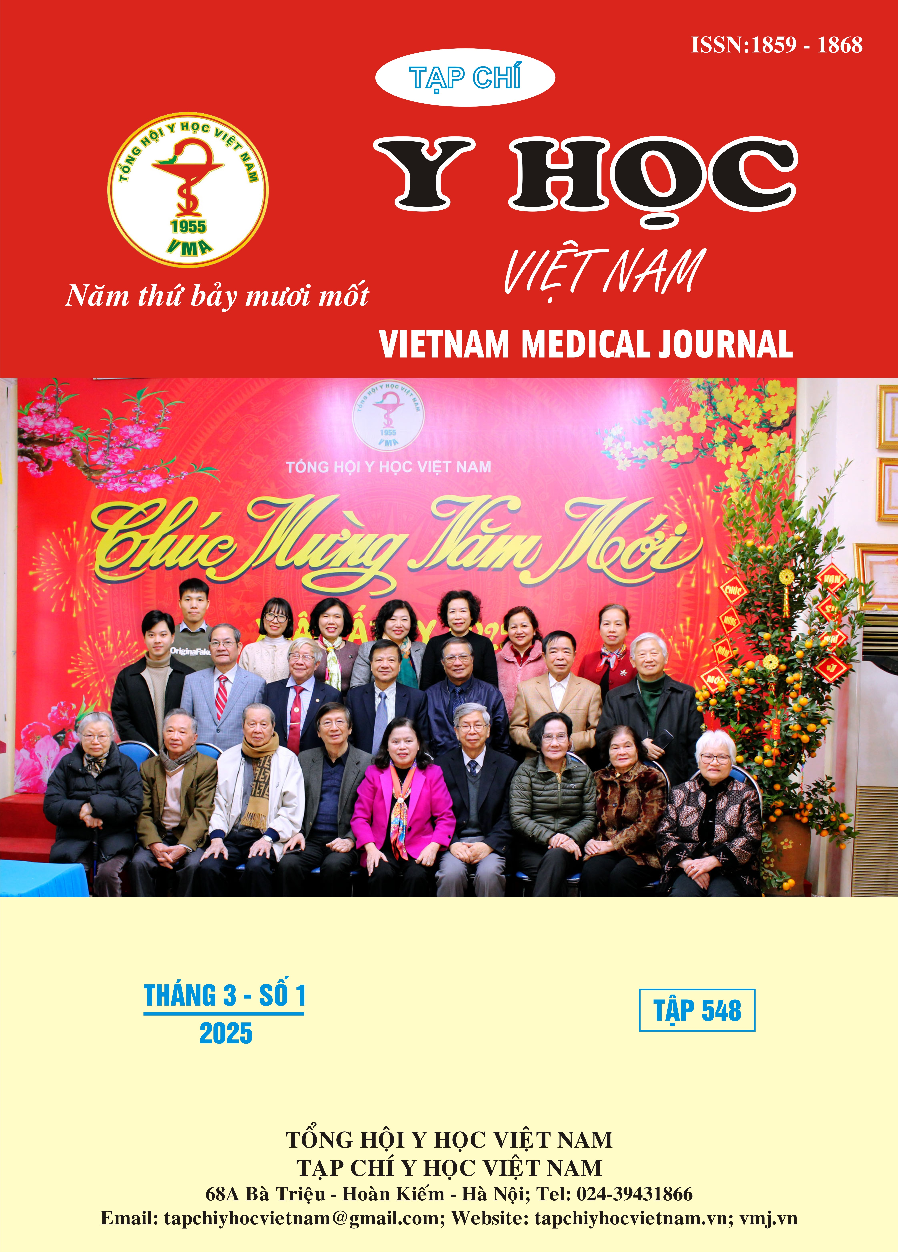NUTRITIONAL HABITS AND SOME RELATED FACTORS OF HEART FAILURE PATIENTS AT HANOI MEDICAL UNIVERSITY HOSPITAL
Main Article Content
Abstract
Objective: Assess nutritional status and identify some factors related to nutritional status of heart failure patient. Research methods: Cross-sectional descriptive study on 110 heart failure patients from 18 to 60 years old who received inpatient treatment at the Cardiovascular Center, Hanoi Medical University Hospital. Collecting weight, height, waist circumference, hip circumference, assessing nutritional status by the subjective global assessment tool SGA. Research results: Objective: To assess nutritional habits and identify some related factors of heart failure patients at the Cardiology Center, Hanoi Medical University Hospital, in 2023-2024. Methods: A cross-sectional descriptive study was conducted on 110 heart failure patients aged 18 to 60 who were hospitalized at the Cardiology Center, Hanoi Medical University Hospital. Data collected included weight, height, waist circumference, hip circumference, dietary intake, and related characteristics. Results: Among the 110 study participants, the most common age group was 50–60 years, accounting for 57.3%; the under-30 age group had the lowest proportion (2.7%). Regarding gender, males were the majority, representing 68.2%. The consumption of pickled vegetables, salted meat/fish, and processed foods decreased after heart failure diagnosis. Before diagnosis, 50.9% of patients considered their diet salty, 48.2% normal, and 0.9% low-salt. After diagnosis, 40.9% perceived their diet as salty, 53.6% as normal, and 5.5% as low-salt. The difference was not statistically significant (p > 0.05). Patients who consumed alcohol had a 3.43 times higher risk of severe heart failure (heart failure class III and IV) compared to non-drinkers (95% CI: 1.18–9.90), with a statistically significant difference (p < 0.05). Conclusion: The nutritional habits of heart failure patients in this study showed positive changes towards better health. Patients who consumed alcohol had a higher risk of severe heart failure than those who did not.
Article Details
Keywords
nutritional habits, heart failure, Hanoi Medical University Hospital
References
2. Heidenreich PA, Albert NM, Allen LA, et al. Forecasting the Impact of Heart Failure in the United States. Circ Heart Fail. 2013;6(3):606-619. doi:10.1161/HHF.0b013e318291329a
3. Bộ Y tế. Niên giám thống kê Y tế 2019 - 2020. https://moh.gov.vn/thong-ke-y-te
4. Bogaev RC. Cost Considerations in the Treatment of Heart Failure. Tex Heart Inst J. 2010;37(5):557-558.
5. Lv S, Ru S. The prevalence of malnutrition and its effects on the all-cause mortality among patients with heart failure: A systematic review and meta-analysis. PLoS ONE. 2021;16(10):e0259300. doi:10.1371/journal.pone.0259300
6. Đỗ Thị Hiến, Phạm Trường Sơn, Nguyễn Thanh Hải, et al. Tình trạng dinh dưỡng của bệnh nhân suy tim điều trị nội trú tại Khoa Nội tim mạch, Bệnh viện Trung ương Quân đội 108 năm 2022. J 108 - Clin Med Phamarcy. Published online August 12, 2022. doi:10.52389/ydls.v17iDB8.1295
7. Nguyễn Thị Huế, Phạm Minh Tuấn. Tình trạng dinh dưỡng và thực trạng nuôi dưỡng của bệnh nhân suy tim cấp tại Viện Tim mạch Việt Nam 2020. Tạp Chí Nghiên Cứu Học. 2022;149(1):50-59. doi:10.52852/tcncyh.v149i1.495
8. Tạ Thị Như Quỳnh, Phan Thảo Nguyên, Nguyễn Quang Dũng (2024). Tình trạng dinh dưỡng và một số yếu tố liên quan ở người bệnh suy tim tại Trung tâm Tim mạch Bệnh viện E năm 2023-2024. Tạp Chí Y học Cộng đồng 65(CĐ 7 - NCKH). https://doi.org/10.52163/yhc.v65iCD7.1359.


